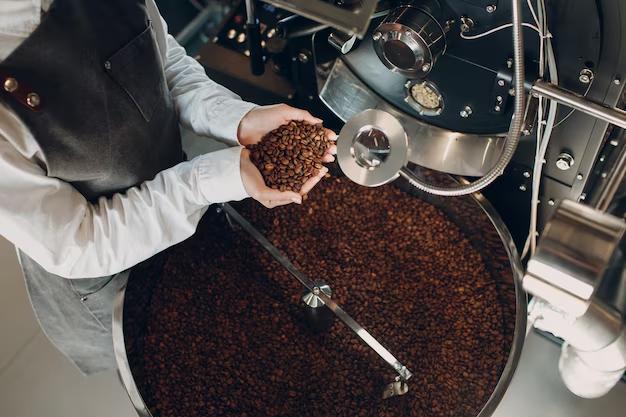Behind every cup of Kona coffee lies a meticulous process of sorting and processing that transforms freshly harvested coffee cherries into the beans cherished by coffee enthusiasts around the world. In the Kona region of Hawaii, where the climate and volcanic soil create optimal conditions for coffee cultivation, this process is carried out with precision and care to preserve the unique flavors and qualities of the beans. In this post, we’ll delve into the intricate art of Kona coffee bean sorting and processing, exploring the steps involved and the techniques used to produce the world-renowned Kona coffee.
Harvesting

The journey of Kona coffee begins with the careful harvesting of ripe coffee cherries from the trees. Skilled pickers hand-select only the reddest, ripest cherries, ensuring that each bean is at its peak of flavor and sweetness. This labor-intensive process is essential for maintaining the quality and consistency of Kona coffee beans, as only fully ripe cherries produce the rich, complex flavors prized by coffee connoisseurs.
Sorting

Once harvested, the coffee cherries undergo a meticulous sorting process to separate the ripe cherries from the unripe or overripe ones. This is typically done using either hand sorting or mechanical sorting machines, which carefully separate the cherries based on size, color, and density. Sorting ensures that only the highest-quality cherries are selected for processing, resulting in a more uniform and consistent batch of coffee beans.
Processing

After sorting, the coffee cherries are processed to remove the outer pulp and reveal the beans inside. There are two primary methods of processing used in Kona coffee production: the wet method and the dry method. In the wet method, the cherries are pulped and then fermented in water to remove the mucilage before being dried. In the dry method, the cherries are simply laid out to dry in the sun, with the pulp intact. Each method imparts its own unique flavor profile to the beans, with the wet method typically producing cleaner, brighter flavors and the dry method producing richer, fuller-bodied flavors.
Drying

Once processed, the coffee beans are dried to reduce their moisture content and stabilize their flavor. This is typically done by spreading the beans out on drying racks or patios and allowing them to dry naturally in the sun. The drying process can take several days to complete, during which time the beans are regularly turned and monitored to ensure even drying and prevent mold or spoilage. Proper drying is essential for preserving the flavor and aroma of the beans and ensuring their longevity in storage.
Milling and Grading

After drying, the coffee beans are milled to remove the parchment layer and reveal the green coffee beans inside. The beans are then sorted and graded according to size, shape, and quality, with only the highest-grade beans making it to market as Kona coffee. The grading process is highly rigorous, with beans being evaluated based on factors such as size, color, density, and defect count to ensure that only the finest beans are selected for sale.
The art of Kona coffee bean sorting and processing is a labor of love that requires skill, precision, and attention to detail at every step of the journey from tree to cup. From the careful harvesting of ripe cherries to the meticulous sorting, processing, and grading of the beans, each stage of the process plays a crucial role in shaping the flavor, aroma, and quality of the final brew. So the next time you enjoy a cup of Kona coffee, take a moment to appreciate the artistry and craftsmanship that went into producing the beans that fill your cup with rich, complex flavors and aromas.
